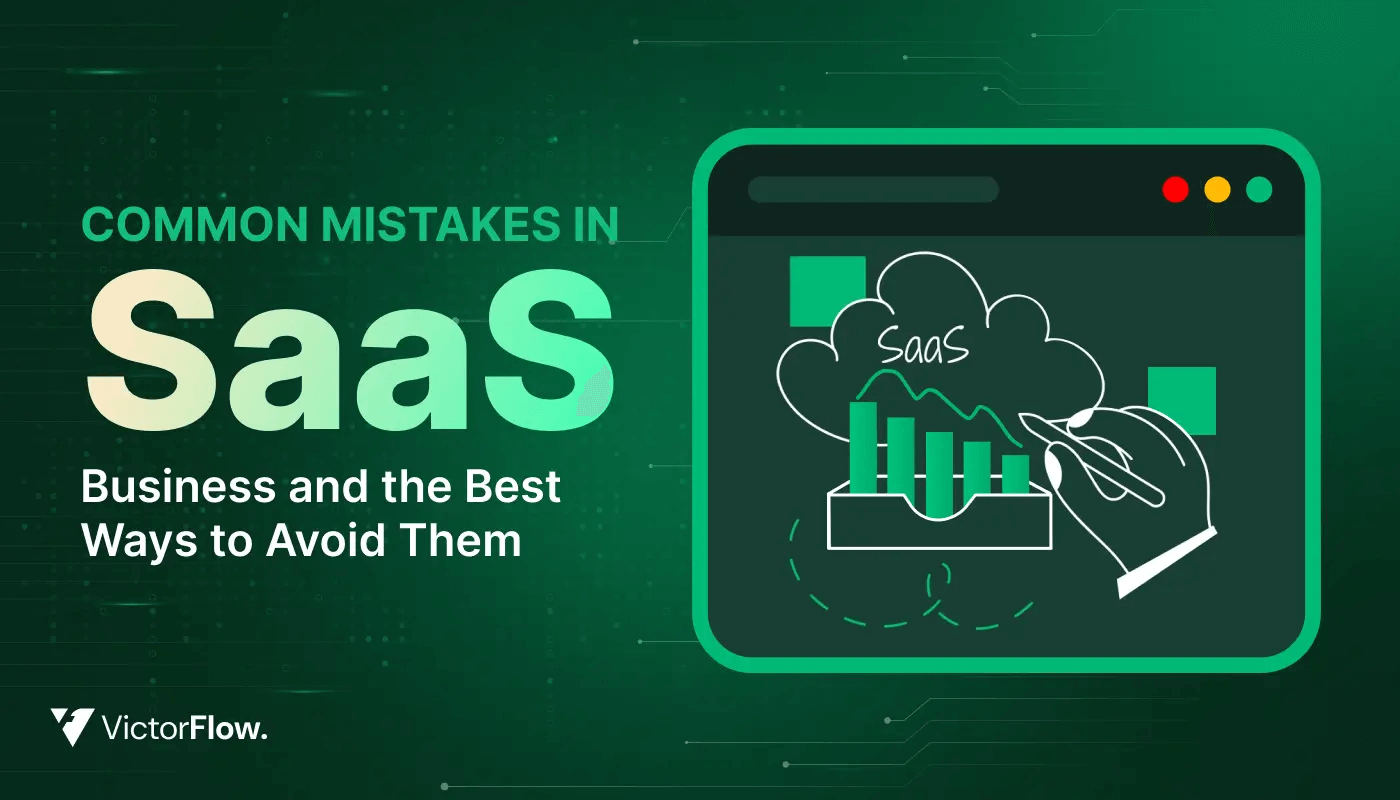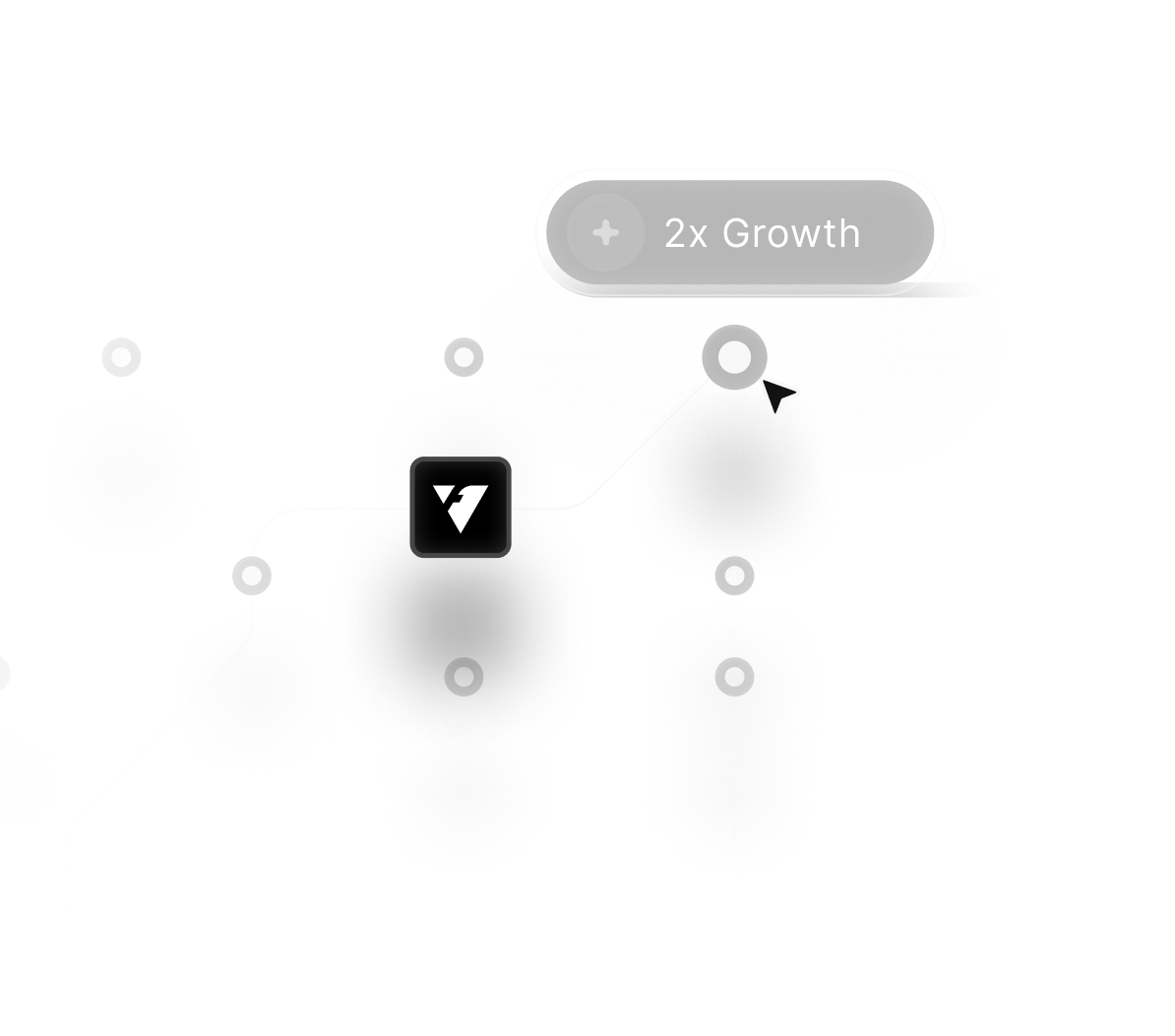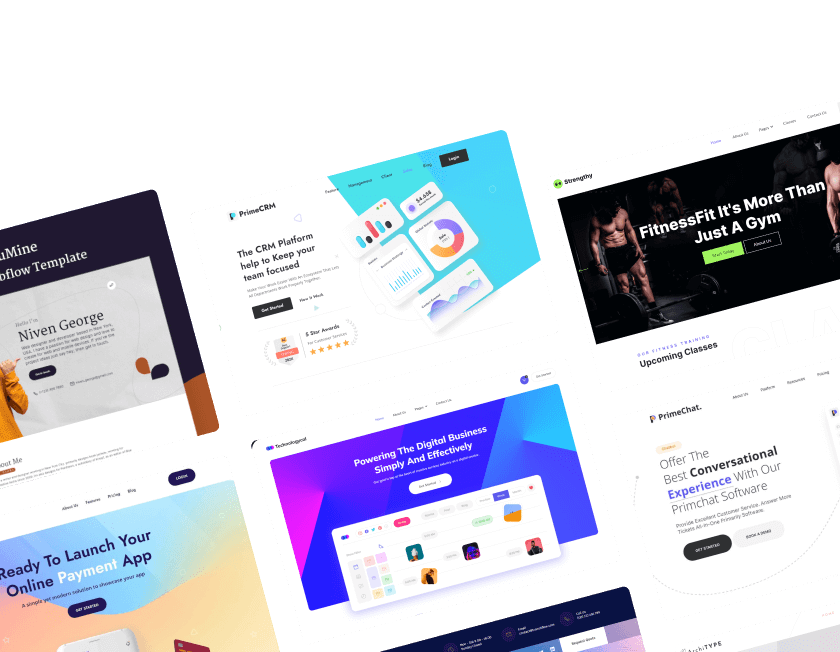November 17, 2025
How to Build a SaaS Website | A Simple Step-by-Step Process

Strong SaaS websites rely on clarity, trust, and smooth pathways that help users instantly understand the product’s value. Clear messaging allows potential customers to process benefits fast and decide if the solution fits their needs.
Good structure ensures visitors move naturally toward trials, demos, or deeper product exploration without confusion. Smart positioning helps SaaS brands stand out amid competitive markets that demand clear differentiation.
Fast loading and intuitive layout support stronger engagement by reducing friction during browsing. Modern SaaS audiences expect transparency, straightforward communication, and immediate access to core product insights.
Conversion-focused sections create predictable flows that guide users effortlessly toward meaningful actions. Strategic design choices make feature explanations, pricing structures, and onboarding pathways far more compelling.
Customizing page elements ensures every visual and message aligns smoothly with the product’s identity and purpose. Building a SaaS website becomes easier when guided by a structured, step-by-step approach designed for clarity and performance.
"Give your SaaS website a strong start.
Book your expert guidance session today."
Table of Contents
- Planning your SaaS website
- Structuring your website
- Choosing the right Webflow template
- Setting up Webflow
- Customizing your website
- Publishing, launching, and post-launch strategies
1. Plan Your SaaS Website

Before diving into design and development, you need a clear approach. Understanding your business and how your website can convert visitors into paying customers is crucial.
This means knowing your product's value, target audience, and the customer journey.
Your SaaS business model forms the foundation of your website. Without understanding what your SaaS offers, how it solves problems, and who it's for, you can't design a website that truly converts.
It's not just about aesthetics - it's about communicating your value proposition effectively.
1. Define the Problem Your SaaS Solves
The foundation of any successful SaaS product is solving a specific problem. Before creating a compelling website, clarify what issue your potential customers face and how your software provides the solution.
For instance:
- If your product is a project management tool, the problem might be teams struggling with disorganization and poor collaboration. Your solution? A centralized dashboard that streamlines task management.
- If you're offering a personal finance app, the issue might be difficulty tracking spending, while your app automatically categorizes expenses and offers financial recommendations.
Your website must communicate this clearly and immediately. Visitors should understand the problem and your solution within seconds of landing on your homepage. Make it simple, direct, and captivating—highlighting the pain point and your solution with a strong headline that resonates.
2. Identify Your Target Audience
Once you've defined your solution, understand who will benefit from it. Are you targeting businesses, individuals, or a specific niche? This shapes everything about your website.
For example:
- If you're offering a B2B SaaS, your audience might include startups, enterprises, or agencies seeking efficiency and scalability.
- If you're targeting B2C, focus on individual consumers or freelancers looking for user-friendly solutions.
This directly impacts your messaging, pricing, and even website design. Consider a CRM designed for real estate agents—instead of generic CRM features, your messaging should focus on tools specifically tailored for that industry. The more tailored your approach, the better your conversion rates.
3. Determine How Your Website Converts Visitors into Users
Your website needs to turn visitors into paying users. Consider these four common SaaS conversion models:
Free Trial
The most popular strategy! Tools like Notion, Webflow, and Canva use this approach. You let users try your product before committing. A great CTA here is: "Start your 14-day free trial—no credit card required!"
Demo or Sales Call
This works best for high-ticket SaaS products like HubSpot or Salesforce. Instead of a free trial, you offer a "Book a Demo" or "Watch a Demo" option.
Subscription Plans
Monthly or annual billing, like Netflix, Spotify, or Adobe. If this is your model, your pricing page needs to be clear and easy to understand.
One-Time Payment
Some SaaS tools offer lifetime access for a one-time fee—great for users who prefer to avoid subscriptions.
Choose the model that best fits your SaaS and make it super easy for visitors to take action!
2. Structure Your Website

Now that you've planned your SaaS business, it's time to structure your website. Every page should serve a purpose—guiding users smoothly toward signing up, booking a demo, or making a purchase.
Home Page
Your homepage is the first chapter of your SaaS story and needs to grab attention immediately. Visitors decide within seconds if your product is right for them—so make it clear what you're offering.
Keep it simple with a clear value proposition, paired with a strong call-to-action (CTA) like "Start Your Free Trial" or "Book a Demo." The goal is to make it crystal clear what your SaaS does and why it matters.
Features Page
Once someone is interested, they'll check out your Features Page. This is where you convince them that your SaaS is exactly what they need. The mistake most companies make is just listing features without explaining why they matter.
Your goal isn't just to talk about features—it's to sell benefits:
- Instead of "AI-powered analytics," say "Instant insights to boost your team's productivity"
- Instead of "Seamless integrations," say "Connect with your favorite tools in seconds, no coding needed"
People don't buy features; they buy solutions to their problems. The more clearly you communicate that, the more likely they are to convert.
Keep the layout simple. Use short descriptions, clear visuals, and maybe a comparison table showing why you're better than competitors. Make it easy to skim, focusing on how your product makes their life easier.
Pricing Page
The Pricing Page is crucial—if someone makes it this far, they're seriously considering your product. But a confusing pricing page can kill conversions instantly.
The key is clarity and simplicity. Show your plans in an easy-to-scan layout. Whether it's tier-based pricing like Basic, Pro, and Enterprise, or a simple monthly flat fee, avoid hidden costs or confusing terms.
Consider highlighting the most popular or best-value plan as a subtle nudge to help users make a decision. If you offer custom pricing, make sure there's an easy way to get in touch. A "Contact Us for Pricing" button works best when it leads straight to a form or scheduling link.
About Page
Many overlook the About Page, but this is where you build trust. People don't just buy products—they buy from companies they connect with.
Talk about why you started your SaaS, the problem you're solving, and what makes your company different. If you have a small team, show real photos of team members. If you've been featured in publications or have big-name clients, showcase those logos.
Trust is everything. A strong About Page with a genuine story and credibility markers makes people feel comfortable choosing your product.
Contact Page
Your Contact Page should make it effortless for people to reach you. A simple form with just a name, email, and message works best. Don't ask for too much information upfront.
If you offer live chat or a chatbot, mention it here. If customer support is a key selling point for your SaaS, make sure your support email or phone number is clearly visible.
For high-ticket SaaS, consider adding a "Schedule a Call" button with a tool like Calendly. The easier it is for potential customers to book a demo, the better your chances of closing the deal.
Blog Page
A blog isn't just about writing articles—it's a lead-generation tool. If done right, it helps you rank on Google, bring in organic traffic, and position yourself as an industry expert.
Consider content like how-to guides, case studies, and industry insights. The more valuable your content, the more likely people will trust your brand—and eventually sign up for your SaaS.
A well-structured blog is a long-term investment that keeps paying off by driving traffic and building credibility.
Social Proof Section
People trust other people more than marketing copy. That's why social proof is a game-changer.
An FAQ section addresses common objections before someone even asks. If people often worry about security, integrations, or customer support, answer those concerns upfront.
Testimonials and case studies are even more powerful. If you have happy customers, showcase their stories with real names, photos, and measurable results. If a potential customer sees someone similar to them achieving success with your product, they're far more likely to sign up.
If you're just starting out without many testimonials, you can still add trust signals like "Featured in" logos, security certifications, or statistics like "Over 1,000 businesses trust our platform."
3. Choosing the Right SaaS Webflow Template

Now that we've outlined your website's structure, it's time to select the perfect template. Picking the right Webflow template is like finding the perfect outfit for your SaaS business—it should fit well, look stylish, and help you make a lasting impression!
With thousands of Webflow templates available, how do you choose one that will make your SaaS shine? Here's what to look for:
Conversion-Focused Template
You want visitors to take action, so pick a template with clear calls-to-action (CTAs) that are easy to spot.
The design should guide visitors to the next step—whether that's signing up, starting a free trial, or booking a demo. A modern, sleek UI makes a huge difference in grabbing attention and driving action.
SEO-Optimized Template
You could have the most stunning website, but if no one can find it, what's the point? Look for templates built with SEO in mind—clean code, proper structure, and features that help your site climb search rankings. More visibility means more conversions!
Mobile-Friendly TemplateX
Most of your audience will visit your site on their phones, so ensure your template is fully mobile-responsive.
Your site should look just as good on a phone as on a laptop. If not, you risk losing potential customers instantly.
Webflow offers fantastic free templates to get you started on a budget. But if you're ready to take your site to the next level, investing in a premium template is worth it. This small investment will pay off in user experience and conversions.
4. Set Up Your Webflow Project

Now that you've got the foundation ready, let's set up your Webflow project:
- Head over to Webflow.com and log into your account
- Use the link in the description to access free or premium Webflow templates
- Explore the templates and choose one that fits your vision
- Once selected, you'll land in your Webflow dashboard
- Name your project, and your template will be fully loaded
Before customizing, align everything with your brand:
- Go to the 'Style Manager' in Webflow's Designer to set up your color palette, fonts, and design elements
- Choose colors that represent your brand's personality
- Pick fonts that speak to your audience
- Ensure consistency across buttons, headings, and all elements
Next, prepare your site's content:
- Create SEO-friendly headlines, descriptions, and CTAs to boost visibility and engagement
- Make sure your calls-to-action are crystal-clear and compelling to drive conversions
5. Customize Your Template
.gif)
Let's walk through customizing your template step by step:
1. Initial Setup & Template Review
- Access the template and familiarize yourself with the layout
- Take note of sections and elements most relevant to your SaaS business
2. Content Customization
Text Customization
- Replace all placeholder text with your SaaS-specific content
- Update your SaaS name and tagline in the header (e.g., "Transform Your Workflow with [Your SaaS Name]")
- Replace feature descriptions with specifics about your product, focusing on solving key pain points
- Update CTA buttons throughout the site (e.g., "Start Free Trial", "Request a Demo")
- Rewrite the company description on the About page
Images & Media Customization
- Replace the placeholder logo with your own
- Update background or banner images to reflect your SaaS brand
- Customize icons used for features or services
- Include screenshots or demo videos showing your product in action
3. Design Customization
Typography
- Select fonts that match your SaaS brand (modern sans-serif fonts like Roboto, Lato, or Montserrat work well)
- Adjust font sizes in headings and body text for proper hierarchy
- Set line height for optimal legibility (typically 1.5x font size for body text)
Color Scheme
- Replace template colors with your brand colors
- Define a clear primary color for buttons, headings, and CTA sections
- Adjust background colors for sections (SaaS sites typically use neutral backgrounds like white or light gray)
Layout Customization
- Customize the navigation bar to include essential pages
- Ensure consistent spacing between sections
- Edit buttons to stand out from the background using contrasting colors
4. Features & Functionalities
Forms
- Update forms for demo signups or free trials
- Configure form settings and connect to your email system
Pricing Tables
- Update with your actual pricing plans and features
- Customize the style to highlight your best-selling plan
Testimonial Section
- Add real customer reviews showcasing your SaaS strengths
- Include customer images or logos for authenticity
5. Interaction and Animation
Animations
- Create engaging page load animations
- Add hover effects for buttons and images
Scroll Effects
- Consider reveal animations as users scroll down the page
6. SEO Optimization
Meta Tags
- Update meta titles and descriptions for each page
- Include keywords related to your SaaS product
Alt Text for Images
- Add descriptive alt text for all images
URL Structure
- Ensure URLs are clean and descriptive (e.g., /pricing, /about-us)
7. Mobile & Tablet Responsiveness
Mobile Customization
- Check how your website looks on different screen sizes
- Adjust text sizes, navigation, and buttons for mobile users
8. Testing and Validation
Cross-Browser Testing
- Test your site on all popular browsers
- Verify all forms, buttons, and links work correctly
Mobile Testing
- Test on physical mobile devices to ensure seamless performance
6. Publish Your Site and Implement Post-Launch Strategies

Connect Domain
- Go to Site Settings > Hosting and connect your domain
- Update DNS records to point to Webflow hosting
- Publish your site
Post-Launch & Maintenance
- Integrate Google Analytics to track traffic and conversions
- Consider heatmap tools like Hotjar to track user behavior
- Regularly update your website with new features, blog posts, or testimonials
- Create backups to prevent data loss
Conclusion
Strong SaaS websites depend on thoughtful structure, effective messaging, and performance-focused design. Clear communication keeps users engaged by showing value instantly without overwhelming details.
Focused layouts reduce friction by guiding visitors directly toward sign-ups, trials, or demos. Fast loading speeds increase trust, keeping users involved instead of abandoning sessions prematurely.
Strategic visual hierarchy elevates key features and showcases the product’s true strengths. Reliable frameworks help teams maintain consistent updates while ensuring the website scales well.
Conversion improvements become easier through ongoing refinement, testing, and data-driven adjustments. Building a high-performing SaaS website ultimately leads to better visibility, stronger trust, and long-term customer growth.

FAQ
1. What is the first step when building a SaaS website?
Defining your value proposition and target audience creates a foundation for the entire site.
2. How important is speed for SaaS websites?
Fast loading directly affects sign-ups, user trust, SEO performance, and overall experience.
3. Why do SaaS sites need strong messaging?
Clear storytelling helps users understand the core problem your product solves instantly.
4. Where should CTAs be placed on a SaaS site?
Strategic placement on hero sections, pricing pages, and feature sections boosts conversions.
5. Who should design a SaaS website?
Specialists experienced in SaaS UX, onboarding flow, and conversion strategy deliver the best results.
6. How often should a SaaS website be updated?
Regular improvements based on analytics, user behavior, and market changes keep the site competitive.
Table of Contents
Choose Our Service, Grow Fast!
Follow Us
Related Posts

Explore 38+ free Framer templates for 2025 with updated designs. Create beautiful, fast, and fully cloneable websites that are SEO-friendly and easy to customize.
Framer’s marketplace offers over 2,000+ modern and fully customizable templates, making it easy to find the perfect starting point for your next website. This list highlights the #1 selected 38+ Free Framer templates for 2025, all handpicked for quality and performance."


December 5, 2025
Impactful hero videos guide viewers through energy and storytelling, while static imagery excels in simplicity, fast loading, and instantly communicating core brand value.
Impactful hero videos guide viewers through energy and storytelling, while static imagery excels in simplicity, fast loading, and instantly communicating core brand value.


Avoid costly SaaS errors with our guide to common mistakes and proven tips to boost product adoption, increase revenue, and enhance overall customer success.
Avoid costly SaaS errors with our guide to common mistakes and proven tips to boost product adoption, increase revenue, and enhance overall customer success.

Ready to Scale Your Project to the Next Level?
Let's take your project to new heights, reach out and see how we can help you.




















